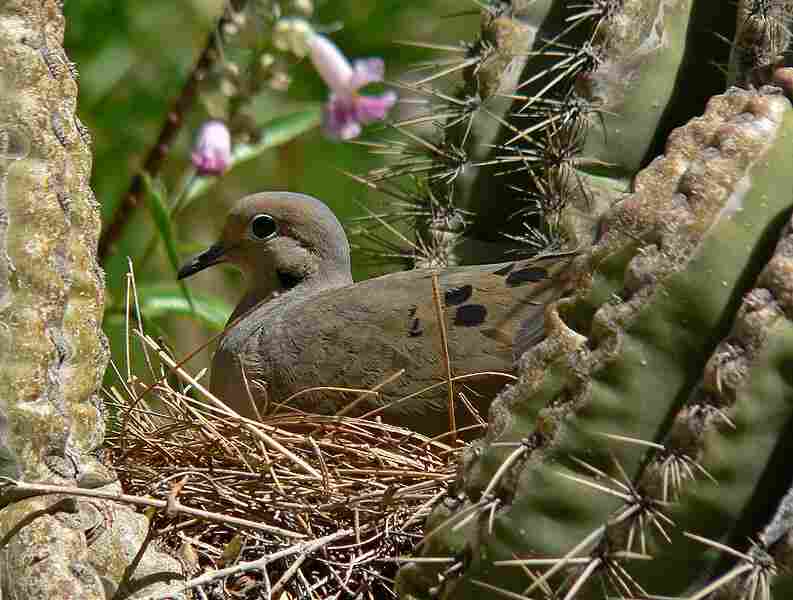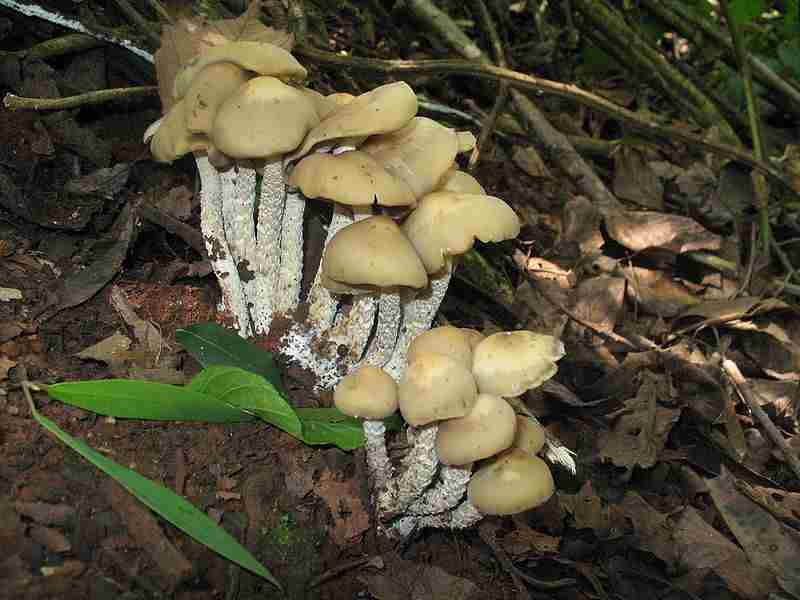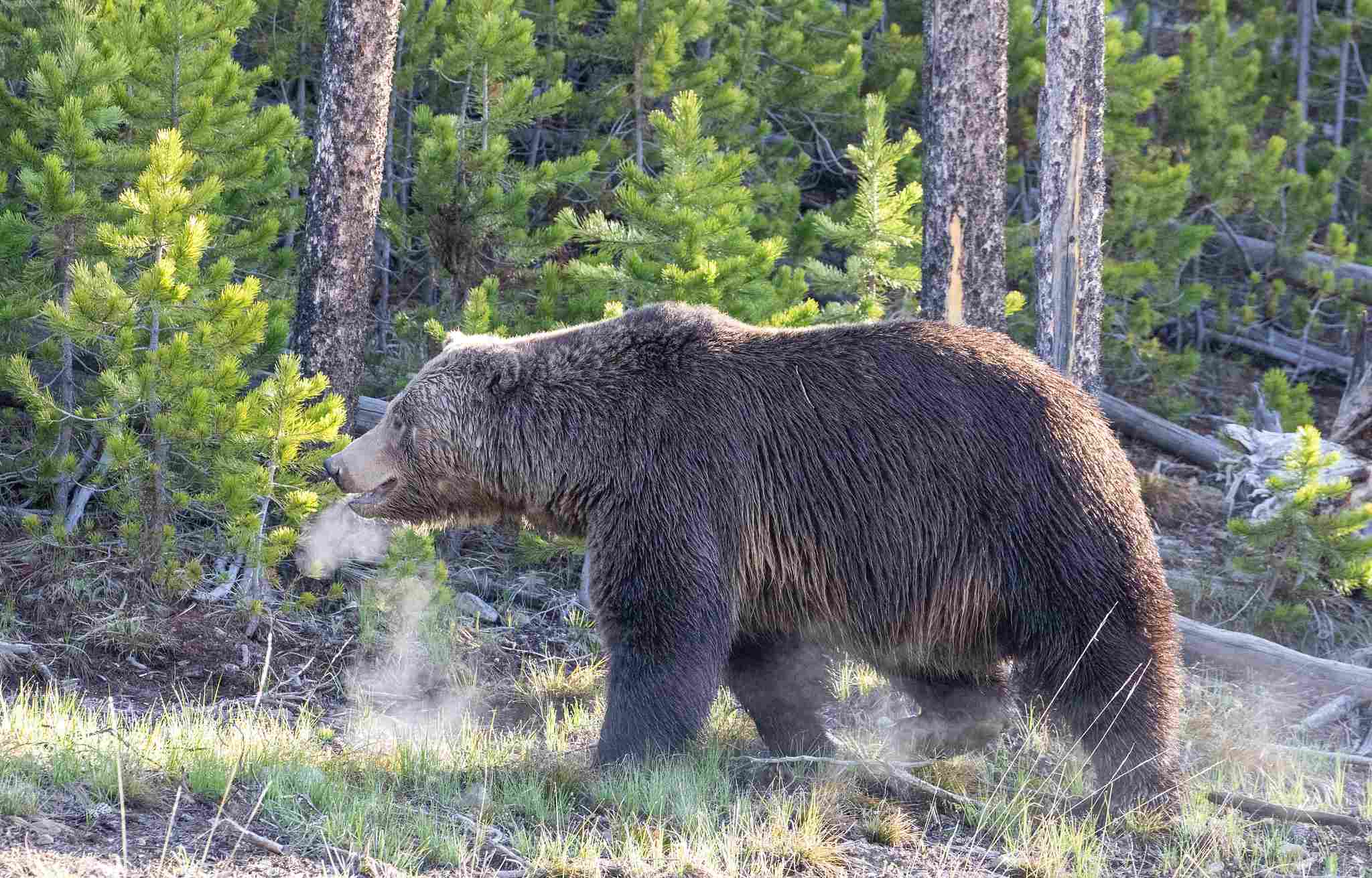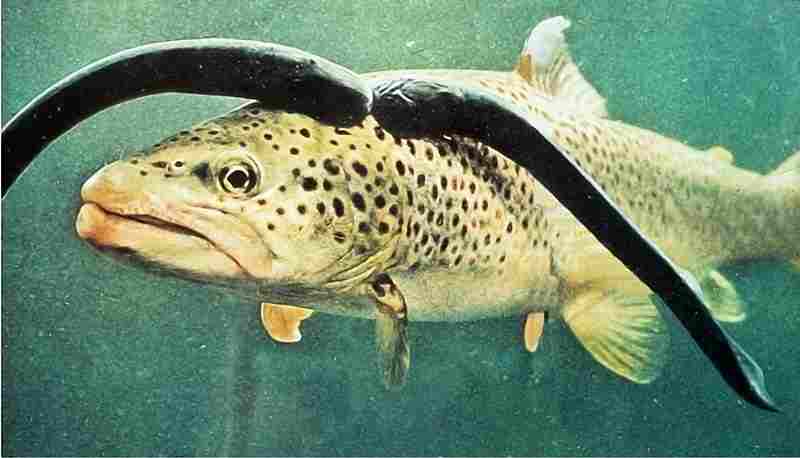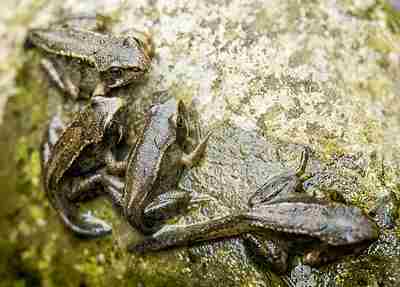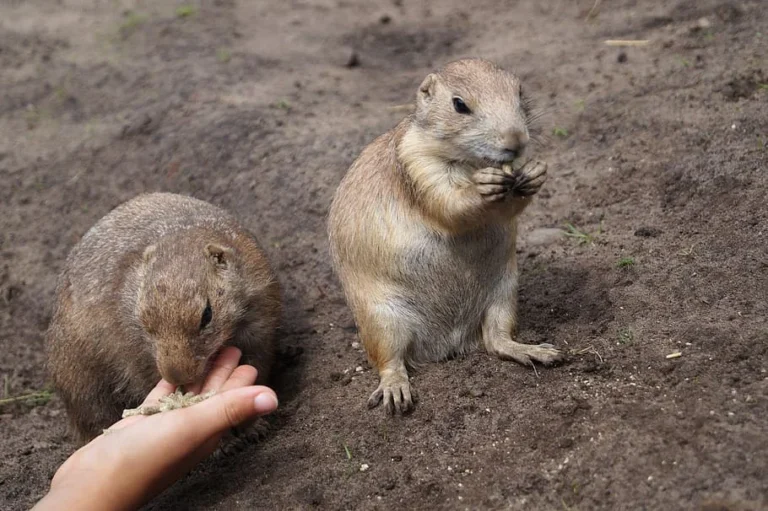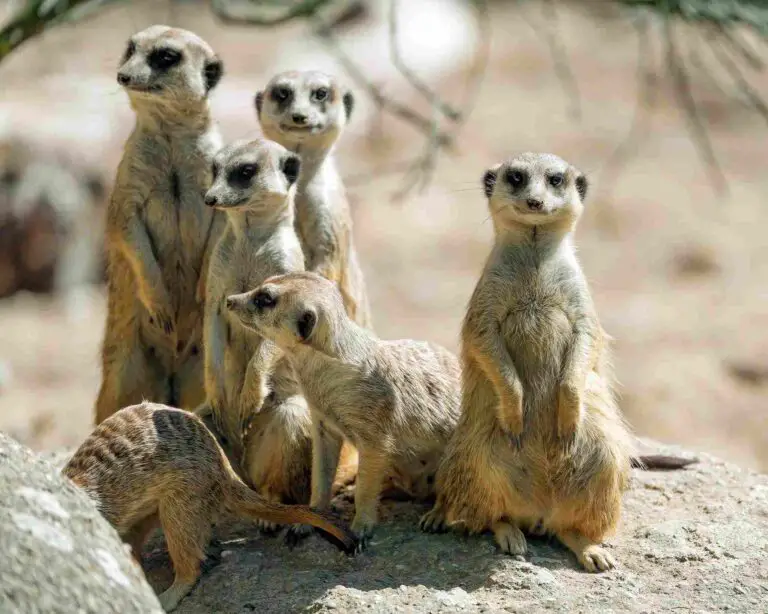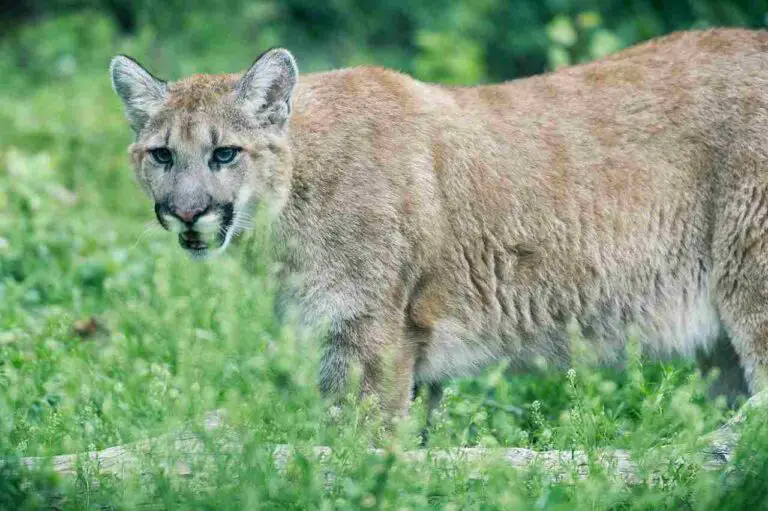11 Biotic Factors in the Sahara Desert and Their Ecologic Relevance
Biotic factors in the Sahara Desert are; autotrophs, herbivores, carnivores, omnivores, decomposers, commensalism, mutualism, parasitism, competition, and organic adaptation.
This article discusses biotic factors in the Sahara Desert and their characteristics, ecological relevance, as follows;
1). Sahara Autotrophs (as one of the Biotic Factors in the Sahara Desert)
Autotrophs in the Sahara Desert, like in any other terrestrial ecosystem, are very vital as biotic components.
Autotrophs can be described as organisms (such as plants), that are capable of producing their own food through the process of photosynthesis.
These organisms utilize solar energy (in the form of light), alongside water and carbon dioxide, to synthesize organic biomass in the form of compounds like glucose, thereby providing the foundational nutrients and energy required to sustain the entire desert food chain.
Ecological Relevance and Importance of Autotrophs in the Sahara Desert
The ecological relevance and importance of autotrophs in the Sahara Desert can be attributed to phenomena like primary production, herbivore sustenance, habitat creation, soil conservation, biodiversity support, carbon sequestration, and ecological resilience. These are discussed below;
Primary production is a function of autotrophs, which are classified as the primary producers in the Sahara Desert's food web.
As stated earlier, they constitute the foundation of the ecosystem, through their photosynthetic activity that involves transforming solar energy into chemical bioenergy, which is conveniently stored in their tissues [9].

The energy-rich organic matter resulting from photosynthesis in autotrophs, serves as a source of nutrition and energy for herbivores, which are the primary consumers.
Although sparse in comparison to that of richer ecosystems like tropical rainforests, vegetation in the Sahara effectively provides essential resources for herbivores, including mammals like camels and gazelles; and insects like desert locusts.
These herbivores feed on plant materials to meet their nutrient and energy needs.
Autotrophs in the Sahara, including shrubs, trees and grasses, contribute to habitat creation. They build microenvironments that offer food resources, shelter and suitable microclimate for various of desert-adapted organisms, including reptiles, small mammals and insects.
Soil stabilization is yet another function that can be attributed to autotrophs in the Sahara.
The roots of desert plants help to stabilize the soil and mitigate erosion in the arid environment. This is especially important in the desert, where wind is a highly-effective agent of erosion that can displace sediments and nutrients.
Carbon is sequestered as autotrophs carry out photosynthesis, because the process involves absorbing carbon dioxide from the atmosphere. This process can help reduce the concentration of greenhouse gases in the atmosphere, thereby regulating the climate and reducing the severity of environmental impacts associated with global warming on various scales.
In spite of its low relative nutrient-availability, the Sahara supports a unique variety of plants with significant species richness, that have become adapted to the harsh desert climate. These plant species contribute to the Sahara's biodiversity especially in its basal trophic level.
Ecosystem resilience is maintained by autotrophs in the desert, by the provision of a stable energy resource (autotrophic biomass from photosynthesis) even under harsh environmental conditions.
These autotrophs have evolved to tolerate prolonged periods of drought while still serving as food sources for herbivores.
Status of Autotrophs as Biotic Factors
Autotrophs are indeed biotic factors, because they are living components of an ecosystem, alongside heterotrophs like animals, fungi, and non-photosynthetic bacteria.
In contrast, abiotic factors are inorganic, non-living components of the ecosystem, and include physical elements and parameters like sunlight, water, soil and temperature.
2). Sahara Herbivores
Herbivores in the Sahara Desert are also fully involved in ecological processes within their habitat, as biotic components of the ecosystem.
They are primary consumers, and rely directly on autotrophs like succulent plants, as their main source of food.
Sahara herbivores have evolved multiple, multidimensional adaptations for coping with the harsh arid conditions of their surrounding, making them resilient contributors to the dynamics of the ecosystem.
Ecological Relevance of Herbivores in the Sahara Desert
The ecological relevance of herbivores in the Sahara Desert can be understood by observing their roles in grazing pressurization, nutrient cycling, predator sustenance, seed dispersal, ecosystem resilience, plant community modification, and inter-organic relations.
Grazing pressure is exerted by herbivores on the plant populations that serve as their food, within the Sahara Desert.
They regulate the density of the plant population, and prevent unhealthy overpopulation dynamics whereby few competitive plant species dominate the landscape. By this means, herbivores increase plant biodiversity by creating avenue for multiple species to grow.
Sahara herbivores are involved in nutrient cycling.
Through consumption of plants, they assimilate nutrients stored within the plant tissues. These nutrients are released back to the ecosystem after digestion, as waste. This leads to continuous recycling of nutrients, and helps maintain soil fertility.
Predatory organisms in the Sahara Desert owe their survival, to a great extent; to herbivores.
These herbivores serve as a major food source for the predators in the desert, which include reptiles, birds of prey, and some mammals. Availability of herbivorous prey supports the trophic structure and contributes to sustainability of energy transfer within the food chain.
Some herbivores in the Sahara, aid in seed dispersal by consuming seed-bearing fruits and subsequently excreting the waste (including indigestible seeds) in different locations.
This mechanism of dispersal enables plants to colonize new areas, and contributes to diversity of both species-composition and spatial distribution.
Herbivores contribute to ecologic resilience in the Sahara Desert, because they are able to adapt to fluctuations in availability of food and water, as well as to drastic climatic fluctuations.
These increase the entire ecosystem's resilience in the face of severe environmental variability.
Feeding preferences of herbivores can influence the overall structure of the plant community.
For instance, they may preferentially graze on certain species of plants, whose abundance and spatial distribution become altered in a manner that affects plant competition.
Herbivores may share mutualistic or commensal relationships with other species in the Sahara Desert. For example, some detritivorous insects may benefit from herbivore waste as a source of nutrients, without directly affecting the herbivores.
*Overview of Herbivores in the Sahara Desert, Examples
A herbivore in the Sahara Desert is an organism that primarily feeds on plants as its main source of food.
Five herbivores that live in the Sahara Desert are;
1. North African gerbil
2. Cape hare
3. Cape porcupine
4. Jerboa
5. African spurred tortoise
3). Sahara Carnivores (as one of the Biotic Factors in the Sahara Desert)
Carnivores in the Sahara Desert are another main group of biotic components of the ecosystem.
They include apex predators, which play a key role in regulating the populations of their prey, and maintaining diversity; health and equilibrium of the ecosystem.
Sahara carnivores are generally well-adapted to survive in the challenging desert terrain, and are essential for the functional stability of the desert energy pyramid.
Ecologic Relevance of Carnivores in the Sahara Desert
The ecologic relevance of carnivores in the Sahara Desert ranges from their role in trophic regulation, to their contributions to biodiversity, prey speciation, carrion removal, competitive interaction, symbiosis, ecological balance, and habitat indication. These are discussed below;
Because they occupy higher levels of the food chain, carnivores in the Sahara Desert, exert control over the populations of prey species including herbivores. Their predatory activities help regulate the abundance of herbivores, in such a manner that prevents overgrazing along with its potential impact on plant assemblages.
The presence of carnivores in the Sahara Desert, contributes to biodiversity in terms of the addition of carnivorous organisms to the native species' population, as well as through the prevention of unbalanced dominance of a few resilient herbivorous species.
When carnivores hunt and consume other desert animals, they foster the coexistence of a diverse array of plant and animal species in the desert.
Prey selection is a habit of carnivores in the Sahara, which have preference for specific prey species.
Such selective/preferential predation can influence the distribution and behavior of their prey. Carnivores exert predation pressure on lower populations that contribute to some adaptations found in desert animals. Such adaptations in turn affect the feeding habits strategies and survival of the carnivores.
Carrion is a food source for some opportunistic carnivores in the Sahara Desert.
Examples of such carnivores include hyenas, which are scavengers that help in cleaning up carrion and controlling the spread of pathogens [10].
Their consumption of animal remains, helps mitigate the outbreak of diseases, while recycling used nutrients back into the system.

Competitive interactions among Sahara carnivores for food resources, often lead to complex trophic loops within the predator community. Such competitive dynamics can affect the abundance and distribution of both carnivorous species and their prey, in the desert.
Symbiotic relationships may also involve some carnivores which cooperate directly or indirectly with other species in the Sahara.
Through such links and involvements, carnivores contribute to the maintenance of ecological equilibrium, which is critical for the continuity of the ecosystem.
Lastly, carnivores can serve as indicators of the trends, integrity and overall health of the desert ecosystem. Analyses of changes in their distribution, behavior or population numbers can reveal broader ecological shifts as well as potential threats to the functioning of the ecosystem.
Examples of carnivores in the Sahara are; hyena, Saharan cheetah, and jackal.
4). Sahara Omnivores
Omnivores in the Sahara Desert are versatile consumers, which are capable of feeding on both plant and animal matter.
With their dietary adaptability, these animals contribute to nutrient cycling and energy flow in the ecosystem.
Ecologic Relevance of Omnivores in the Sahara Desert
The ecologic relevance of omnivores in the Sahara Desert can be traced to multiple factors including their dietary flexibility, contribution to nutrient cycling, seed dispersal, predation and scavenging, population control, ecologic interaction, and resilience.
Sahara omnivores have a wide-ranging diet, which allows them to exploit a variety of food resources available in their environment, including insects, small vertebrates, carrion and plants.
This adaptability makes them resilient under varying conditions of food availability, thereby contributing to the stability of the desert food web.
By consuming both animal and plant matter, omnivores facilitate the cycling of essential nutrients, within the desert ecosystem.
They help to transfer energy and nutrients across trophic levels, in such a manner that improves the overall productivity of the ecosystem.
Some Sahara omnivores, including some lizards and mammals, may inadvertently contribute to seed dispersal by ingesting fruits and later defecating them in other locations. As is the case with herbivores, this process contributes to plant colonization and dispersal in various parts of the desert.
Omnivores can function as both scavengers and opportunistic predators [8], preying on smaller animals and scavenging on leftovers from other carnivores. Their feeding habits influence the dynamics of both predator and prey populations, and their consumption of carrion contributes to the recycling of nutrients.
Population control is another function of omnivores in the Sahara Desert.
These animals help control the abundance of their preferred prey species, preventing unfavorable population explosions that could have detrimental impacts on the plant community. By consuming animal biomass, they indirectly influence the dynamics and distribution of some carnivores, herbivores and plant species.
Complex ecological interactions occur between omnivores and other biotic elements of the ecosystem. Their multifaceted feeding behaviors as both herbivores and carnivores can impact the structure of the food web and its internal trophic links.
Ecosystem resilience is enhanced by the presence of omnivores, through increase in the diversity of feeding patterns and trophic interactions, and reduced dependence on specific food resources.
The adaptability of omnivores helps to maintain ecologic stability in the face of continuous disturbances and environmental fluctuations.
Examples of Omnivores in the Sahara Desert
A classic example of an omnivore in the Sahara Desert is the fennec fox (Vulpes zerda), which is a sand-landscape dwelling mammal that is highly adapted to arid environments.
Food for the fennec fox comprises of insects, rodents, reptiles, eggs, and plant materials [2].
5). Sahara Decomposers (as one of the Biotic Factors in the Sahara Desert)
Decomposers are biotic factors in the Sahara Desert that play a fundamental role in the breakdown of organic matter and cycling of nutrients.
Ecologic Importance of Decomposers in the Sahara Desert
Decomposers like beetles, millipedes, fungi, earthworms, break down organic matter including remains and waste, from which they release essential nutrients into the soil.
It must be noted that not all of these organisms are found in the extremely hot and dry zones, as some occur in semiarid adjacent areas where conditions permit their survival.
Organic matter is broken down by decomposers into simpler molecules and compounds through the process of biodegradation. This breakdown process causes the release of nutrients like nitrogen, phosphorus and carbon, which thereby become available for uptake by other organisms such as plants.
Decomposers help to manage soil health in the desert, by transforming organic substrate into humus, a dark, nutrient-rich material. Humus enhances water retention, nutrient availability and structure of desert soil, which are all critical for supporting plant growth and sustaining desert life.
Recycling of waste materials is a function of decomposers in the Sahara Desert.
Animal remains and excrement are among the materials which decomposers act upon.
By breaking down these materials, they prevent unfavorable accumulation of organic matter, which could otherwise create unfavorable conditions like the depletion of oxygen and spread of pathogens.
Adaptations of decomposers in the Sahara are the products of evolution to survive in the harsh terrain, with extreme conditions and scarce resources.
Some of these decomposers may enter periods of dormancy during prolonged dry periods, while others possess specialized enzymes that they use to efficiently break down organic substrate under low moisture conditions.
Ecosystem balance can also be traced to decomposers which are involved in maintaining the equilibrium of the desert ecosystem.
Activities of these organisms, help regulate the availability of nutrients, which impacts plant growth and, in turn, influences herbivore, carnivore and omnivore populations.
Maintaining this ecological equilibrium is important for the overall stability and health of the desert ecosystem.
Examples of Decomposers in the Sahara Desert
Examples of decomposers in the Sahara Desert are;
1. Worms
2. Fungi
3 Bacteria
4. Detritivorous insects
6). Commensalism in the Sahara
Commensalism is a type of symbiotic relationship between two or more species, in which one party benefits, while the other is neither significantly helped nor harmed [12].
In the Sahara Desert, commensalism is a biotic component of the ecosystem and has a part to play toward the maintenance of ecologic equilibrium.
Relevance of Commensalism in the Sahara
The ecologic relevance of commensalism in the Sahara can be traced to factors like resource conservation, trophic interaction, and shelter/nesting ground provision.
Resource utilization is optimized through commensalism in many scenarios.
In the harsh desert environment where resource availability is limited, commensalistic relationships permit certain species to maximize their use of available resources.
By cohabiting and/or exploiting the structures of other organisms without causing them harm, the commensal organisms gain a survival advantage.
The complex network of trophic interactions between organisms in the desert ecosystem, is fortified by relations such as commensalism.
Commensalism enhances biodiversity and establishes interdependence among diverse species, which ultimately impacts the resilience and stability of the entire biome.
One of the beneficial functions of commensal relationships in the Sahara is the provision of shelter or nesting sites for some animals, within other organisms.
An example of this is the building of nests by birds in cactus plants. Here, the birds benefit from the protection and shelter provided by the cactus, while the cactus is generally unaffected by the presence of the birds.

Examples of Commensalism in the Sahara Desert
Examples of commensalism in the Sahara Desert include; bird nesting in cactus plants, and burrow reuse by rodents.
Certain bird species in the Sahara Desert, build their nests within the protective spine structure of cactus plants. The cactus provides and elevated (aboveground) and safe location for nesting, protecting the birds from potential predator and ground level dust currents, without itself either benefiting or being harmed in the process.
Some Sahara Desert rodents may utilize the abandoned burrows of other animals, such as reptiles or small mammals, as shelter from predators and extreme temperatures. The rodents therefore benefit from the ready-made burrows without any effect on the original inhabitants.
7). Mutualism in the Sahara (as one of the Biotic Factors in the Sahara Desert
Mutualism is a type of symbiotic relationship where all participating species benefit from the association [1].
In the Sahara Desert, mutualism plays a key ecologic role as a biotic element of the ecosystem.
This form of interaction increases the survival rate and reproductive success of the species involved, thereby contributing to the overall functionality and balance of the desert biome.
Ecologic Relevance of Mutualism in the Sahara
The ecologic relevance of mutualism in the Sahara can be outlined in terns of nutrient exchange, resource sharing, and adaptation to harsh conditions.
Nutrient exchange is an attribute of mutualistic relationships [6] in the desert, and is especially vital in environments where resources are scarce.
Mutualism fosters trophic cooperation between species, enabling them to access essential nutrients and enhance their survival and biological performance.
Resources are shared between desert organisms, which usually face challenges in accessing vital elements like water. Mutualistic relationships facilitate the sharing of resources, and helps species to better withstand the fluctuations in resource availability that accompany arid conditions.
As already stated; the Sahara Desert is characterized by harsh conditions that include extreme temperatures, water scarcity and regional air pollution due to dust storms. Mutualistic interactions can help species in adapting to these challenges, by providing them with support in the course of their adaptive development.
Examples of Mutualism in the Sahara Desert
Examples of mutualism in the Sahara Desert include the association between the desert bee and the cactus plant, and that between yuccas and yucca moths [13].
The desert bee and certain species of cacti, share a mutualistic relationship. Bees depend on the cacti as a source of pollen and nectar, which serve as their food.
As desert bees visit multiple cactus flowers to gather nectar, they inadvertently transfer pollen from one flower to another, thereby facilitating reproduction in the cactus, through pollination.
The cactus benefits from the pollination process, which increases the potential for new growth of cactus plants, and leads to seed production. The mutualistic relationship between bees and cacti ensures the propagation and survival of both species in the challenging desert terrain.
8). Parasitism in the Sahara
Parasitism is yet another type of symbiotic relationship, where one organism; called the parasite, benefits at the expense of another organism; called the host.
In the Sahara Desert environment, parasitism has a significant ecologic role to play as a biotic component of the ecosystem, because it directly impacts the survival of organisms involved.
While the parasitic relationship is detrimental to the host, it is important to consider that parasitism is itself a natural interaction that occurs in many ecosystems, and is a core aspect of biome functionality.
Ecologic Relevance of Parasitism in the Sahara
The ecologic relevance of parasitism in the Sahara can be attributed to factors like population control, nutrient recycling, and disease transmission.
Parasitism can help in controlling the population of certain species in the ecosystem.
By causing infection, disease and mortality among host organisms, parasites prevent unsustainable population growth and maintain a balance between living organisms and available resources in the desert community.
Nutrient recycling occurs due to the activities of parasites, which rely on their hosts for sustenance.
As these organisms feed on the host's body fluids of tissues, they derive nutrients which are subsequently transferred to other components of the ecosystem.
Nutrients acquired by desert parasites are eventually released back into the environment, upon the shedding or death of the parasite.
Disease transmission is carried out by some parasites, which act as vectors for zoonotic diseases that can affect both native animal populations, and humans in areas close to the Sahara Desert [5].
While such parasitic infections can have detrimental effects on the health of host organisms, they also affect predator-prey dynamics and control the growth of certain populations in the ecosystem.
Status of Parasitism as a Biotic Factor
Parasitism is considered a biotic factor because it involves interaction between living organisms in the ecosystem, and affects biological variables like species diversity and survival rate.
Biotic factors include all living components or processes of an ecosystem, such as plants, animals, and microorganisms, and the interactions among these elements.
Biotic Limiting Factors in the Sahara Desert
Biotic limiting factors in the Sahara desert are vegetation abundance, predation, competition for resources, parasitism and disease.
Limited vegetation reflects the scarcity of plant life in the Sahara, and restricts the availability of food resources, and shelter for animals in the region.
Predation is a biotic limiting factor in the Sahara Desert, because predators such as mammalian carnivores and birds of prey, limit the population growth-rates of herbivores and other lower animals.
Desert organic abundance is affected by competition for limited resources such as food, shelter and water.
Parasitism and disease spread, can negatively influence the wellbeing and survival of desert organisms, thereby limiting their populations.
9). Predation in the Sahara (as one of the Biotic Factors in the Sahara Desert)
Predation is a vital ecologic factor and biotic element of the Sahara Desert ecosystem.
It can be defined the act and process whereby one organism; called the predator, hunts and feeds on another organism; called the prey.
In the Sahara, where resource-availability is low and survival is challenging, predation has a major effect on the dynamics of the organic community.
Ecologic Relevance of Predation in the Sahara
The ecologic relevance of predation in the Sahara can be traced to phenomena and concepts like population regulation, trophic structure, predator-prey coevolution, ecological balance, and behavioral adaptation.
Predation helps to regulate the population sizes of different organic groups or species in the ecosystem.
By preying on other animals, predators control their abundance and prevent population over-expansion, which can cause resource depletion and unhealthy competition for limited resources.
Trophic structure of the Sahara Desert is established partly through predation, which creates a trophic link across which energy is transferred from one level to another.
Predators occupy higher trophic levels as consumers of lower organisms, and sometimes other (vulnerable) predators. This trophic dynamic is instrumental for nutrient cycling and energy flow within the ecosystem.
Predation can facilitate coevolutionary adaptations between predators and prey [7].
In the course of evolution, prey species may develop defensive mechanisms, like speed, toxin production or camouflage, which help them evade predators; while predators may simultaneously develop specialized physiological features and hunting strategies to improve the efficiency with which they capture their prey.
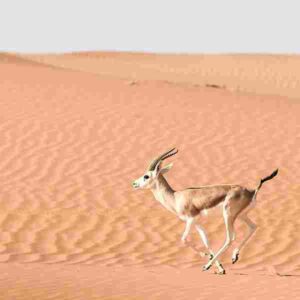
Predators help in maintaining ecological balance, by controlling the distribution and abundance of prey species.
This is because excessively large prey populations can lead to habitat degradation and overgrazing, which affect other species in the ecosystem. Predators act as natural buffers that prevent such adverse imbalances.
Lastly, the presence and activities of predators influences the behavior of prey species in the desert or any other ecosystem.
Prey animals develop avoidant behaviors and increased vigilance to reduce the risk of predation. Such behavioral adaptations, affect not only individual survival but also the dynamics of the entire community.
10). Competition in the Sahara
Competition for limited resources impacts the structure and sustainability of the desert community adversely, especially because it is coupled with relatively harsh conditions.
Ecologic Functions and Importance of Competition, as a Biotic Factor in the Sahara Desert
The ecologic relevance of competition in the Sahara can be traced to its effects on resource accessibility, organic exclusion, species coexistence, population dynamics, behavioral adaptation, and evolutionary procession.
The Sahara Desert is characterized by extreme scarcity of food and water resources.
As a result of this, plants, animals, and microbes are forced to compete for these limited resources in order to survive. Competition for water is particularly fierce, as water availability is a determining factor for the survival and abundance of all resident species.
Competitive exclusion is an outcome of intense competition in all resource-limited biomes like the Sahara. In the process, one specie or group outcompetes another for available resources, leading to the exclusion of the weaker competitor from the ecologic community [11].
While competition leads to exclusion of species, it can also cause species to adapt and specialize in their preference, demand and use of resources, thereby enabling multiple species to coexist in the same habitat.
This coexistence can be described in terns of niche differentiation, where different species evolve to occupy specific ecological niches, minimizing the detrimental effects of direct competition.
Distribution and population size are affected by competition between different species in the ecosystem.
Some of these species may be more successful in acquiring resources, so that population densities become higher in certain areas, while others may be restricted to specific microhabitats where conditions are favorable for their survival.
The behavior and physiology of Sahara organisms, are influenced by competition.
An example of this is the tendency of some animals to exhibit territorial behavior, aimed at protecting vital resources like waterholes. Also, desert pants may increase their competitive advantage by allocating resources to specific parts of their structure, such as their root systems.
Intense competition can facilitate natural selection, and influence the evolutionary process of species in the Sahara. Over time, these species may develop strategies and physiological adaptations that improve their ability to acquire the needed resources, and enhance their chances of survival and continuity.
11). Organic Adaptation in the Sahara (as one of the Biotic Factors in the Sahara Desert)
Organic adaptation is an important biotic factor in the Sahara Desert ecosystem, as it refers to the various morphological, behavioral and physiological adjustments that animals and plants undergo in order to survive and thrive in this extreme environment.
The harsh conditions of the Sahara, which are characterized by nutrient limitations, low water availability and high temperatures, have impacted the evolution of species, resulting in unique adaptations that enable them persist in their challenging habitat.
Plant Adaptations in the Sahara Desert
Plant adaptations in the Sahara Desert include; drought-tolerance, deep root system-development, succulent structural features, and reduced surface area of leaves.
Drought tolerance in many desert plants is an outcome of adaptations which they have developed for the purpose of water conservation.
These adaptations include small, thick, and waxy leaves that reduce the rate of water loss through transpiration [4].
Several desert plants possess extensive and highly branched root systems that they use to tap into underground water sources, allowing them to survive in periods of extended and severe drought.
Succulent structures such as stems are not uncommon among Sahara Desert plants, including cacti. These structures can store water, and serve as a reservoir during dry periods.
The leaf surface area of some plants in the Sahara is minimized, to reduce water loss-rate, while still carrying out photosynthesis.
Animal Adaptations in the Sahara Desert
Animal adaptations in the Sahara Desert include nocturnal behavior, water-conservative digestive systems, sheltering and burrowing, heat reflection and camouflage.
Nocturnal behavior can be observed in many desert animals, which become active during cooler nighttime periods to avoid the intense heat of the day.
Several desert animals have also evolved mechanisms for conserving water, including highly-efficient kidneys and the ability to extract moisture from their food [3].
Seeking shelter underground in burrows, is a common behavior among desert animals, like insects, reptiles, and rodents; and enables these animals to escape the extreme heat of their habitat.
Many desert animals have developed patterns and coloration that provide camouflage, and help them blend into the sandy terrain, to effectively stalk prey, or avoid predators. Some organisms like ants also possess reflective body surfaces that reduce their heat absorption.
Ecologic Significance of Organic Adaptation in the Sahara Desert
Organic adaptation is necessary for the ecological functioning and survival of biodiversity in the Sahara Desert ecosystem. In the absence of specialized traits, the diversity and abundance of life in the desert would be severely limited, as several species would be unable to cope with the harsh conditions.
The adaptation of plants to soil-nutrient deficiencies and scarcity of water, allows them to form a stable foundation for the food chain, and provide sustenance for herbivores.
In turn, herbivores that possess water-conserving abilities can thrive to support carnivores that are also adapted to the desert's conditions. This intricate network of adapted organisms, establishes a delicate state of balance that enables the diverse organic community to coexist and interact beneficially, within the desert.
Conclusion
Biotic factors in the Sahara Desert include;
1. Autotrophs
2. Herbivores
3. Carnivores
4. Omnivores
5. Decomposers
6. Commensalism
7. Mutualism
8. Parasitism
9. Predation
10. Competition
11. Organic Adaptation
References
1). Boucher, D.; James, S. W.; Keeler, K. H. (1982). "The Ecology of Mutualism." Annual Review of Ecology and Systematics 13(1):315-347. Available at: https://doi.org/10.1146/annurev.es.13.110182.001531. (Accessed 7 August 2023).
2). Brahmi, K.; El Amine, K.; Mostéfaoui, O.; Doumandji, S.; Baziz, B.; Aulagnier, S. (2012). "First quantitative data on the diet of the fennec fox, Vulpes zerda (Canidae, Carnivora), in Algeria." Folia Zoologica 61(1):61-70. Available at: https://doi.org/10.25225/fozo.v61.i1.a10.2012. (Accessed 7 August 2023).
3). Luo, S.; Li, Y.; Li, S.; Jiang, R.; Deng, F.; Liu, G.; Zhang, J. (2022). "Expression Regulation of Water Reabsorption Genes and Transcription Factors in the Kidneys of Lepus yarkandensis." Front Physiol. 2022 May 26;13:856427. Available at: https://doi.org/10.3389/fphys.2022.856427. (Accessed 7 August 2023).
4). Mohanta, T. K.; Mohanta, Y. K.; Kaushik, P.; Kumar, J. (2023). "Physiology, Genomics, and Evolutionary Aspects of Desert Plants." Journal of Advanced Research. Available at: https://doi.org/10.1016/j.jare.2023.04.019. (Accessed 7 August 2023).
5). Moser, W.; Adoum, B. A.; Ott, R.; Abderamane, M.; Clements, R.; Wampfler, R.; Poppert, S.; Steinmann, P.; Allan, F.; Geter, H. (2021). "High Prevalence of Urinary Schistosomiasis in a Desert Population: Results from an Exploratory Study Around the Ounianga Lakes in Chad." Available at: https://doi.org/10.21203/rs.3.rs-1016632/v1. (Accessed 7 August 2023).
6). Naidoo, R.; Simpson, Z. E.; Oosthuizen, J. R.; Bauer, F. F. (2019). "Nutrient Exchange of Carbon and Nitrogen Promotes the Formation of Stable Mutualisms Between Chlorella sorokiniana and Saccharomyces cerevisiae Under Engineered Synthetic Growth Conditions." Frontiers in Microbiology 10. Available at: https://doi.org/10.3389/fmicb.2019.00609. (Accessed 7 August 2023).
7). Netz, C.; Hildenbrandt, H.; Weissing, F. J. (2020). "Complex eco-evolutionary dynamics induced by the coevolution of predator-prey movement strategies." Available at: https://doi.org/10.1101/2020.12.14.422657. (Accessed 7 August 2023).
8). Parsons, M. A.; Garcia, A.; Young, J. K. (2022). "Scavenging vs hunting affects behavioral traits of an opportunistic carnivore." PeerJ. 2022 May 2;10:e13366. Available at: https://doi.org/10.7717/peerj.13366. (Accessed 7 2023).
9). Simkin, A. J.; Faralli, M.; Siva, R.; Lawson, T. (2019). "Photosynthesis in non-foliar tissues: implications for yield." The Plant Journal 101(4). Available at: https://doi.org/10.1111/tpj.14633. (Accessed 7 August 2023).
10). Sonawane, C.; Yirga, G.; Carter, N. H. (2021). "Public health and economic benefits of spotted hyenas Crocuta crocuta in a peri‐urban system." Journal of Applied Ecology 58(1). Available at: https://doi.org/10.1111/1365-2664.14024. (Accessed 7 August 2023).
11). Urban, J. K. (2009). "Competitive exclusion." Politics and the Life Sciences 28(2):69-83. Available at: https://doi.org/10.2990/28_2_69. (Accessed 7 August 2023).
12). Veiga, J. P. (2016). "Commensalism, Amensalism, and Synnecrosis." Available at: https://doi.org/10.1016/B978-0-12-800049-6.00189-X. (Accessed 7 August 2023).
13). Ward, D. (2016). "7 Plant–Animal Interactions in Deserts Get access Arrow." The Biology of Deserts (2nd edn) Pages 147–179. Available at: https://doi.org/10.1093/acprof:oso/9780198732754.003.0007. (Accessed 7 August 2023).
